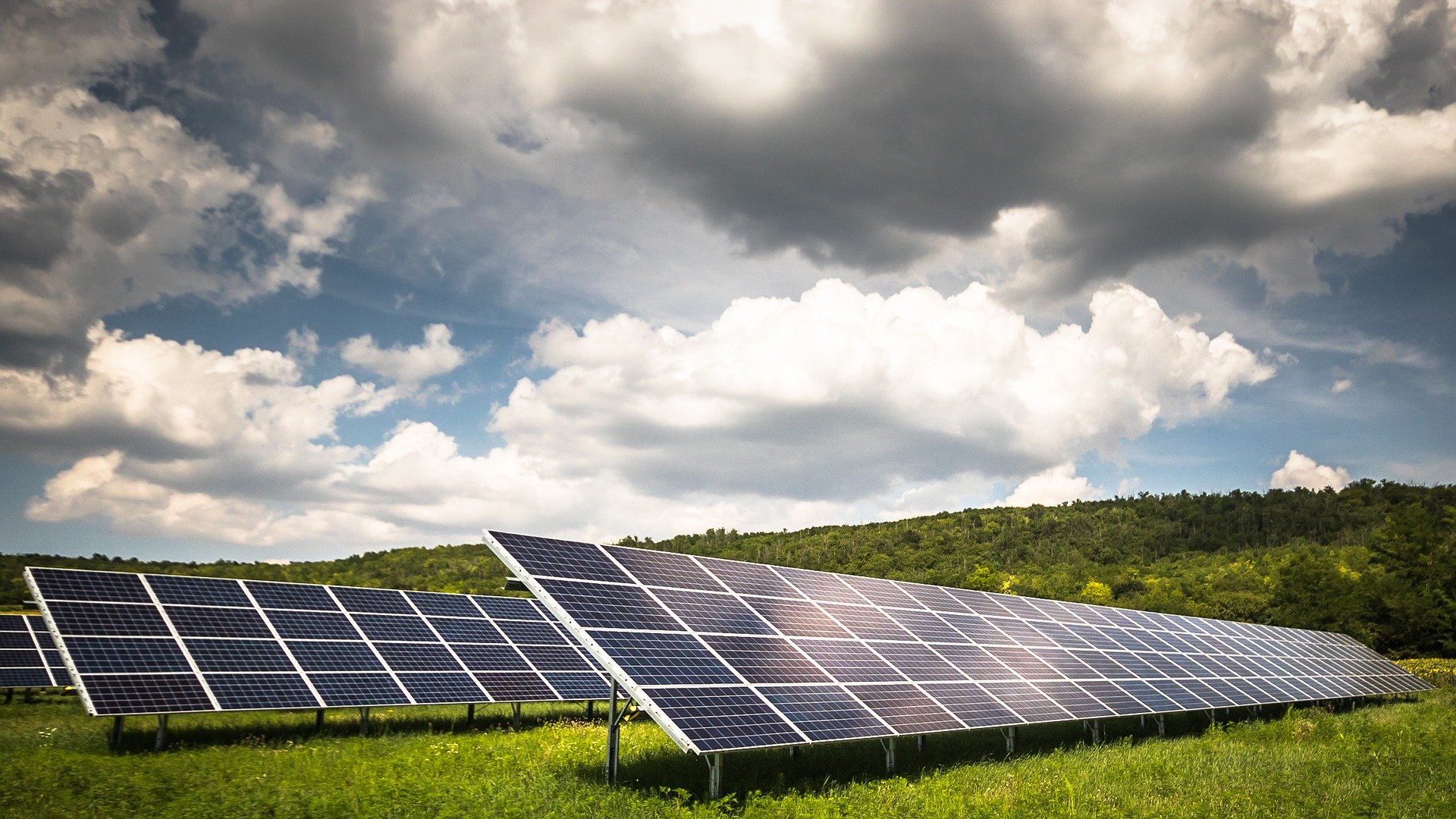As the cost of solar has dropped in recent years, and the technology has developed further, large, utility-scale solar projects have become increasingly viable for developers and landowners alike. In Wisconsin, utilities, consumers, and developers are turning to renewable technologies like solar panels to meet their energy needs and create a clean, green future for everyone in the state. In fact, according to Renew Wisconsin, there are over twenty solar farms generating electricity in the state right now, with even more in the pipeline.
What is a Solar Developer?
A solar developer is a company such as YSG Solar that acquires real estate rights from properties through a land lease agreement or purchase agreement. The solar developer will secure all necessary government approvals to construct and operate the solar facility—as well as government approval to sell the energy.
Wisconsin Utility-Scale Solar Farms Under Development
In addition to the solar farms already operational across the state of Wisconsin, there are a number of upcoming utility-scale solar farms in development at the moment. Six utility-scale solar farms, listed below, are expected to go online on varying dates between December 2020 and October 2021. They range in size from the smallest at 49 MW, to the largest at 300 MW.
- Badger Hollow Solar Farm, Iowa County: 300 MW (December 2020).
- Badger State Solar, Jefferson County: 149 MW (July 2021).
- Paris Solar, Kenosha County: 200 MW (July 2021).
- Point Beach Solar, Manitowoc County: 100 MW (October 2021).
- Two Creeks Solar, Manitowoc County: 150 MW (December 2020).
- Richland County Solar Farm, Richland County: 49 MW (July 2021).
In addition to these large, utility-scale projects, there are a number of smaller solar farm projects currently in development throughout Wisconsin.
How many MWs per acre of land?
On a per-acre basis, 1 MWdc requires between 5 and 7 acres of land.
What size are the solar farms being built in Wisconsin?
Though many of the currently operational solar farms in Wisconsin are on the smaller side, between 1 MW and 5 MW, the six upcoming utility-scale solar farms listed above range from 49 MW to 300 MW. YSG is looking for 1,000+ acres of land that is relatively flat, requires nominal site clearing, and is currently unused. The land shall be near transmission lines and within 2 miles of a substation. The parcels should not have any environmental issues and should also have a clean title.
How much do you pay per acre for land in Wisconsin?
Land lease rates are prices per acre, and the range is from $300 to $3,000 per acre depending on the location and anticipated power purchase agreement price.
Government Approval for Solar Farms
Local government approval is always necessary ahead of the construction of a solar farm. Zoning must be reviewed and permits secured before a project can move ahead, and the review process will involve township and country boards. Additionally, solar farms which are 100 MW or larger require approval from the Wisconsin Public Service Commission, in a process known as a Certificate for Public Convenience and Necessity.
Low impact, responsible development is the goal for all involved in a solar farm project, and there are opportunities for public comment throughout the approval process. On top of this, developers are eager to ensure that the land can be returned to its original state following the completion of the solar project term, and will often include plantings underneath the arrays to support pollinators, soil rejuvenation, and other agricultural functions.
Why does Wisconsin need solar projects?
As ambitious climate targets emerge across the country, and we move toward the use of renewable energy sources, Wisconsin utilities are following suit. With the planned retirement of several coal and natural gas plants in the coming years, it is important that this electricity capacity is replaced. This is where solar comes in. Not only is solar energy a sustainable, environmentally-friendly solution, it is also more economical as solar costs have declined greatly in the past decade. Wisconsin utilities believe that solar facilities can meet state energy needs at a lower cost than both coal and natural gas plants.
The Benefits of Solar Farms for Landowners
With demand for land increasing, and Wisconsin utilities pivoting further towards solar energy, landowners are well-positioned to take advantage of this increased demand. Solar farms are generally sited on private land, and so developers must seek out landowners willing to lease land for their projects. By leasing land for a solar farm, landowners will receive annual payments for the duration of the solar land lease. These long-term lease payments offer landowners an additional revenue stream with minimal effort on their part. Solar farms are constructed, operated, and maintained by the developer, and the land will be returned to its original state following the completion of the lease term.
The Benefits of Solar Farms for Local Governments
In Wisconsin, solar farm projects of 50 MW or larger make annual payments into a utility aid fund, which is then shared among local governments in the area where the solar farm is located. Currently, the revenue sharing formula dictates the following annual payment rates:
- $2,333 per MW to the county
- $1,667 per MW to the township(s)
- $4,000 per MW in total
In the example offered by Renew Wisconsin, a 100 MW solar farm would provide over $10 million to local governments across the first twenty-five years of its operating life. Although the private property housing these solar farms becomes exempt from property taxes (where the project is 50 MW or greater), the net gain from the solar farms is estimated at ten times that of the lost property taxes.
The Benefits of Solar Farms for Community Residents
As noted above, solar farm projects will generate fresh revenue for local governments, which can then be allocated to support the local community in the form of essential public services, reduced property taxes, and more. For example, this new source of revenue could be directed toward road maintenance and repair, or new equipment for emergency services. Renew Wisconsin notes that utility local aid revenue is a no-strings-attached fund, and so local governments can allocate funds as they see fit. Additionally, a solar farm project can create jobs in the community during both the construction phase and in the operations & maintenance sector once the project is completed.
Living Beside a Solar Farm
Solar farms are unobtrusive, low-impact, responsible developments. They are designed so that the host site can be returned to its original state following the decommissioning process, and often they include supports for natural & agricultural processes already occurring on the land. They are quiet, they don’t use any water, and they do not release any harmful emissions into the atmosphere. There are no chemical outputs or odours associated with an operational solar farm. The only sound generated by a solar farm is the noise from cooling fans within equipment like inverters and transformers. However, these fans only operate during daylight hours when the panels are generating power, and there is no audible sound once the sun goes down.
Common Solar Farm Concerns
Below, we’ve outlined a number of common concerns that residents may have regarding solar farm projects, and explained why these concerns are nothing to worry about.
- Stray Voltage: Collection and transmission lines used for solar farms are efficient, modern pieces of technology, effectively preventing any stray voltage.
- Glare: Solar panels are designed to absorb sunlight, not reflect it. They are coated with anti-reflective material and reflect as little as 2% of incoming sunlight, roughly the same amount as water.
- Snow: Large-scale solar farms have panels which rotate throughout the day. This feature, combined with the tilt of solar panels, ensures that snow will fall off. Additionally, the heat from the portion of the panels still generating will help to melt any remaining snow.
- Wildlife: Solar projects are not a threat to local wildlife. In fact, projects are often designed to create new habitats for pollinators, and contribute to improved water quality. Solar farms are also required to install fencing to ensure no wildlife enters the project area and endangers itself in the process.
If you have any additional questions about the impact of a solar farm project on your community, your locality, or the local wildlife, feel free to contact YSG Solar to learn more.
Solar Farms & Battery Storage
In addition to the noted advantages of a utility-scale solar farm in Wisconsin, or anywhere else, an integrated battery storage system alongside the solar panels could generate even further benefits. Solar-plus-storage is an increasingly popular aspect of the solar industry because of declining costs, improved technology, and greater awareness of the associated benefits. Installing battery storage alongside a solar farm allows for the generated energy to be stored and used at different points throughout the day or night. It can also be used to help maintain electricity frequency on the grid, and provide backup power in the event of an outage. A solar-plus-storage battery system offers an unprecedented level of energy independence.
Are you a Wisconsin landowner? You could be in a position to generate extra revenue by leasing your land for a solar farm. Solar developers like YSG are seeking viable land to host solar projects in Wisconsin—and throughout the United States. Send us an email or call at 212.389.9215 to learn more, and find out if your land is suitable.
YSG Solar is a project development vehicle responsible for commoditizing energy infrastructure projects. We work with long-term owners and operators to provide clean energy assets with stable, predictable cash flows. YSG's market focus is distributed generation and utility-scale projects located within North America.
Sources:

